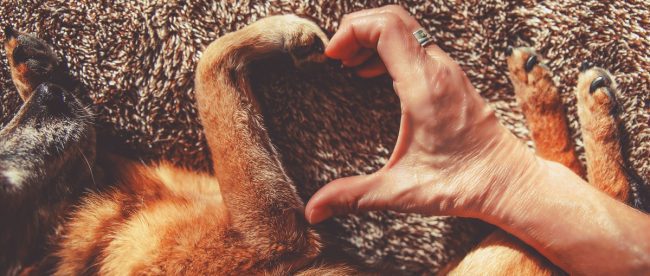Doddery dogs – could your dog be struggling with arthritis? How can you help?
Would you know how to spot if your dog had arthritis – and what to do about it?
As we all grow a bit older and those aches and pains get a bit more frequent, especially in the morning or in the cold, spare a thought for your four legged friends, because this happens to them too. You could have a dog with arthritis.
The dog you’ve loved and grown up with is also getting on a bit, and needs your love and support as they slow down and get those aches and pains, just like you.
Dogs – and cats – can suffer from age or injury related arthritis and could be suffering in silence if you don’t know what to look for. They don’t display pain in the same way we do, and often without realising it, you can be allowing your furry pals to suffer.
Most people don’t understand what to look for, so often they don’t even realise their dog is in pain
The good news is that with a bit of know-how there are things you can do to help. Canine arthritis specialist Hannah Capon is passionate about helping enable people to understand how to spot the signs, and what to do about it.
“The thing is, most people don’t understand what to look for, so often they don’t even realise their dog is in pain,” she explains. “They don’t behave the same way as us. They don’t necessarily cry out and they can’t tell you in words, so it’s not always obvious.
“I had one client, a guy who just couldn’t understand why his dog was slow, and kept sitting down and not wanting to move. When I told him it was because she was in pain, he was really upset. It had never occurred to him. He thought she was just being difficult.”

HOW TO SPOT IF YOUR DOG IS IN PAIN
Not every dog is the same, but these are some signs to look out for…
- Walking slowly / being less enthusiastic about walks
- Scuffing claws during walking, not lifting the legs properly
- Arching the back or hunching whilst walking
- Having difficulty getting up from lying down – and lying down again
- Struggling to squat for the loo
- Struggling to jump up on things or do stairs
THINGS YOU CAN DO TO HELP
Obviously a reliable diagnosis by a professional is important. But unless you see a vet who understands or specialises in the treatment of arthritis you may sometimes struggle to get the best advice. An arthritis specialist can really make a big difference – check out the resources and advice HERE.
- Doggy diet! Extra weight puts pressure on their limbs, so keep them at a healthy weight to enable easier moving around with less stress on the body
- Get healthy! A healthy diet can not only help keep weight to a healthy level, the right nutrition can make a big difference. Go for clean, healthy foods without additives. Try some natural remedies such as turmeric.
- Supplements can really help, such as Yumove, but get some vet advice before picking the right ones if possible
- Make adaptions around your home. Remember it’s your dog’s home too, and he or she ought to be comfy there! Do stuff like secure rugs so there’s no slippage. Get the dog a decent, supportive bed. And put in shallow ramps where possible to avoid stairs. It’s not rocket science. Look around the house and have a think about how you can make it better for your lovely doggie.
- Treatments. So – get a decent vet who can give you the medical support you need, whether it’s anti-inflammatories, painkillers, supplements etc – but it’s worth investigating complementary stuff too. Not everything works for every dog, but massage, osteopathy, acupuncture etc can all be positive for some animals. Just go gently at whatever you do.
More than anything take a good long look at your dearly loved friend and just have a proper think. Is the dog moving around easily? Does it prefer parts of the house? Are there warm areas that the dog likes to sit? Does the dog want to get up later in the day or more slowly?
The bottom line is that this stuff is intuitive and caring at its heart, so go at it with love and just make sure you question everything. Then question it again
#WorldArthritisDay
#Itsmyhometoo
#DogArthritis
For more info check out Canine Arthritis Management




Leave a comment